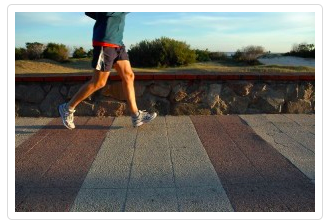WHAT YOU NEED TO KNOW ABOUT KNEE ARTHRITIS

Knees are complex joints that can bear a large amount of weight at any time. For everyone, especially active and athletic individuals, the pressure and strain that we put our knees through can be extreme. To many, at first glance, the knee joint does not have a very complex movement, only straightening and bending the leg. However, reality is very different than what it seems, because the knee accomplishes a wide range of dynamic motion even during the most normal uses.
Anatomy of The Knee
The ends of the femur/thigh bone, tibia/leg bone, and patella/kneecap actually glide smoothly and move off one another thanks to articular cartilage that rests in between all three bones. Similar to ice underneath a skate, the cartilage reduces friction and lets the joint bones move freely and easily. Additionally, the lateral meniscus and the medial meniscus operate as mini shock absorbers to help bear the weight and force exerted upon the knee.
What Is Knee Arthritis
Knee arthritis is the loss of cartilage between the thighbone, the leg bone, and the knee cap. As cartilage is lost, the three bones’ ability to glide smoothly off one another is reduced, making patients feel like their joint is stiff, which limits the knee’s range of motion. It’s not uncommon for patients to actually feel their knees pop and/or catch if they have arthritis. Increased friction leads to increase knee pain, which becomes especially prominent when a patient walks long distances, climbs stairs, or stands for extended periods of time.
It’s not uncommon for cartilage to be more worn away on one side than on the other, which can make people either bow-legged or knock-kneed. Knock-knee is a condition in which the angle of the knee is severely in, possibly touching the other knee when the opposite leg is straight. Patients who have severe cases of knock-knee are not able to touch their ankles or feet together when straightening their legs. Bow-legged is the exact opposite as knock-knee, forcing the knee outward, away from the opposite leg.
Knee Arthritis Treatment
Arthritis treatment depends heavily upon the age of the patient and the severity of their arthritis. Treatment can be broken down into three general groups: non-operative methods, operative methods, or combination of the two. Eric S. Millstein, MD is an expert orthopedic surgeon located in Beverly Hills who specializes in knee injuries. His years of experience make him more than qualified to accurately diagnose any knee injury, while providing his patients with a variety of treatment options.
Non-operative treatment includes medication, weight loss, changing/giving up specific kinds of activities, physical therapy, braces, injections, and physical assistants like a cane. Any combination of these options can alleviate pain and help with a patient’s mobility. However, once those options have been exhausted, operative methods should be considered, which includes knee replacement surgery. Although these are serious surgeries that must be thoughtfully taken into account, they offer many patients plagued with knee arthritis pain a relief they wouldn’t otherwise have.
Consult With Beverly Hills Orthopedic Surgeon Dr. Millstein Today
Dr. Millstein prides himself on his ability to make a difference in the lives of his patients by improving their quality of life. If you have arthritis and are finally looking for relief, don’t wait. Call Millstein Orthopedics today to book your appointment at (310) 595-1030 to take the first step in your arthritis recovery.

